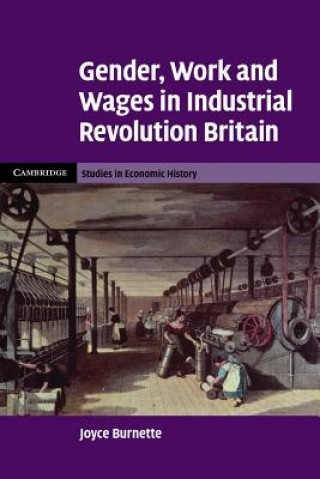
Delivery
Shopping guide





Doesn't suit? No problem! You can return within 30 days
 Gift voucher
any value
Gift voucher
any value
You won't go wrong with a gift voucher. The gift recipient can choose anything from our offer.
Gender, Work and Wages in Industrial Revolution Britain
 English
English
 154 b
154 b
 Delivery to Austria
Delivery to Austria
30-day return policy
You might also be interested in


A major 2008 study of the role of women in the labour market of Industrial Revolution Britain. It is well known that men and women usually worked in different occupations, and that women earned lower wages than men. These differences are usually attributed to custom but Joyce Burnette here demonstrates instead that gender differences in occupations and wages were instead largely driven by market forces. Her findings reveal that rather than harming women competition actually helped them by eroding the power that male workers needed to restrict female employment and minimising the gender wage gap by sorting women into the least strength-intensive occupations. Where the strength requirements of an occupation made women less productive than men, occupational segregation maximised both economic efficiency and female incomes. She shows that women's wages were then market wages rather than customary and the gender wage gap resulted from actual differences in productivity.
About the book
 English
English
Categories


 Contact
Contact How to shop
How to shop



































